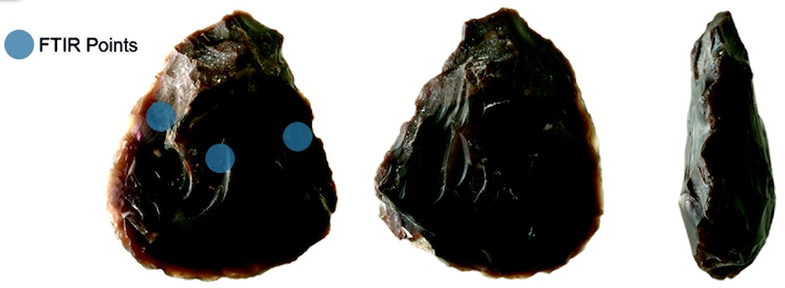Prehistoric “Swiss Army Knife” Evidence that Paleo Man Butchered Animals
We may earn revenue from the products available on this page and participate in affiliate programs. Learn more › A...

We may earn revenue from the products available on this page and participate in affiliate programs. Learn more ›
A set of 500,000-year-old stone tools has recently been identified as the first direct evidence that Paleolithic man used specifically crafted tools to butcher animals. Among the items found is what’s being called a prehistoric “Swiss army knife”—a hand axe capable of cutting and breaking down bone, tough sinew and hide. A smaller scraper was also identified as a tool used to separate fur and animal fat from muscle tissue.
The tools were found nestled among the 500,000-year-old elephant remains at a dig site in Revadimin, Israel in 2004. A team of archeologists consisting of Prof. Ran Barkai and graduate students Natasha Solodenko and Andrea Zupanchich of Tel Aviv University unearthed the hand axes and scrapers still covered with animal residue. This lead to the recent discovery that Paleolithic man created these stone tools in order to process animal carcasses and hides.
“There are three parts to this puzzle: the expansion of the human brain, the shift to meat consumption, and the ability to develop sophisticated technology to meet the new biological demands. The invention of stone technology was a major breakthrough in human evolution,” says Prof. Barkai. “Fracturing rocks in order to butcher and cut animal meat represents a key biological and cultural milestone.”
According to Live Science, the evolution from a plant-based diet to one requiring animal protein can be linked to the greater caloric need due to an increase in brain development. Scientists hypothesize that this brain growth pushed early humans towards advancements in tool making for better survival.
“In this thousand-piece puzzle called archaeology, sometimes we find pieces that connect other pieces together. This is what we have found with the stone tools and animal bones,” says Prof. Barkai.
The research was published on March 18 online in the journal PLOS ONE.